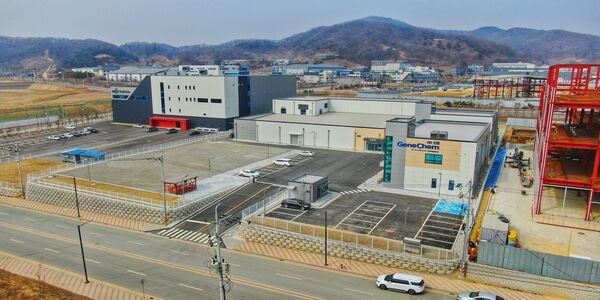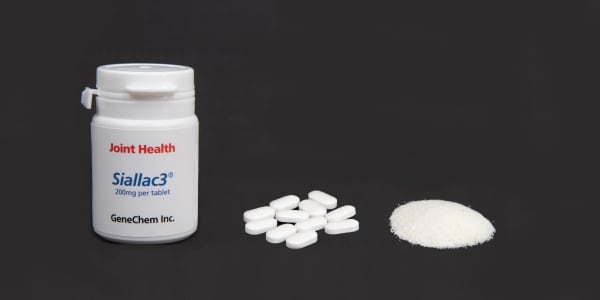Global demand for human milk oligosaccharides (HMOs) is growing quickly as manufacturers of infant formula and other nutritional products adapt their offerings to increasingly health-conscious consumers.
Yet, few companies are producing sialyllactose, a vital HMO, commercially, creating a potential barrier to efforts to scale up and meet demand. Recognizing the problem, GeneChem has built a plant dedicated to the production of sialyllactose in Sejong City, Korea.
Construction of the facility began in January 2022 and the plant was completed and operational later that year. Having set up the production plant, GeneChem is focusing its marketing on the segments with the greatest potential. The company is promoting its HMOs for use as dietary supplements and in infant formula in the US and Asia, reflecting both the growth potential of those major markets and the strong competitive advantage that it enjoys in them.
“With our first commercial plant, we are confident that GeneChem will be able to fully support this rapid growth of HMOs market, not only for infant formula but dietary supplements, as it is looking for solutions for joint health, muscle health where sialyllactose is known to have positive effects according to clinical studies,” says Nam Huh, CEO of GeneChem.

GeneChem, a Korean biotech company and a subsidiary of Soulbrain Holdings Company, is now securing the regulatory clearances that it will need to support its commercial ambitions. The US Food and Drug Administration has already designated 3’-sialyllactose as Generally Recognized As Safe (GRAS). GeneChem expects to receive GRAS approval for 6’-sialyllactose in 2023. In parallel, the company has advanced its regulatory strategy in Asia, positioning it to soon receive a series of approvals in the key region, and has recently landed FSSC 22000 and Kosher certification, and expects to receive Halal certification in the first half of 2023.
HMOs: An emerging opportunity for nutrition companies
Clinical trials have validated the role of HMOs in infant nutrition, linking the addition of the molecules to formula to reductions in bronchitis and lower respiratory tract infection.1,2 A randomized, double-blind, placebo-controlled trial found preterm infants administered two HMOs as a liquid supplement reached the point that they could receive all of their nutrition from milk two days before their counterparts in the control cohort.3
The research has spawned a fast-growing market. GeneChem estimates the global market will achieve a compound annual growth rate of 22.7% through 2027, causing its value to increase to $556 million. The forecast reflects the expectation that growing evidence of the importance of HMOs will drive increased demand for infant formula and other nutritional products among health-conscious consumers.
Suppliers have responded to the forecasts by investing in production of HMOs such as 2-fucosyllactose and lacto-N-neotetraose, but there are important gaps in the manufacturing capacity. Notably, there has been a shortfall of capacity for producing sialyllactose, an HMO that is found in breast milk at lower levels than other indigestible carbohydrates but nonetheless plays an important role.
Scientists have shown sialyllactose helps microbial communities in the gut respond to stress and linked the molecule to the prevention of skin inflammation in atopic dermatitis mouse models and protection against osteoarthritis.4–6
GeneChem added to the evidence by conducting a 96-week clinical trial with Pusan National University Hospital. The trial enrolled patients with a rare inherited disease who have restricted sialic acid production that eventually leads to muscle loss. An early look at the data linked the administration of 6’-sialyllactose to physical and biochemical improvements.7 GeneChem plans to publish the full research paper in the second quarter of 2023.
The body of evidence shows the need to consider sialyllactose when planning to add HMOs to infant formula and nutritional products. Yet, manufacturing issues have slowed the addition of sialyllactose production capacity. While other HMOs are made through simple fermentation, and can therefore be easily scaled up, sialyllactose is very hard to produce using that well-established method.
GeneChem responded to the challenge by developing its One-Pot Enzyme Reaction System, a proprietary, patented technology for the sustainable production of HMOs that are identical to those found in milk. The company developed the production process, which is covered by patents in the US, European Union, Japan, China and Korea, in 2007 and has been using it to provide infant formula developers with sialyllactose for research use since 2011. A pilot-scale production process was established in 2010.
Moving into commercial production
As evidence of the nutritional importance of HMOs has increased, GeneChem has identified a need to move beyond production of 3’-sialyllactose and 6’-sialyllactose for research purposes. To meet rising demand for large quantities of the HMOs, the company has built a commercial plant that establishes it as one of the few businesses that are manufacturing sialyllactose on a large scale.
Within the joint health category, GeneChem has begun market development based on its osteoarthritis patent. The focus reflects evidence that, unlike other ingredients, sialyllactose both relieves pain and suppresses cartilage destruction and promotes regeneration. GeneChem linked sialyllactose to improved joint heath in a 12-week clinical trial.

Above image is Siallac3, a sample product of 3'-sialyllactose, produced by GeneChem
The next step is to expand the portfolio. GeneChem plans to produce additional HMOs to address a number of future growth opportunities, while simultaneously striving to further differentiate itself from the competition by working with industry partners such as Debut Biotech.8
US-based biotech startup Debut is applying its advanced manufacturing technology to the development of rare HMOs in partnership with GeneChem. Human breast milk contains more than 200 HMOs but the push to enhance infant formula has so far focused on the five most prevalent carbohydrates. Attempts to incorporate rarer HMOs have been stymied by production challenges, leading GeneChem to partner with Debut to apply cell-free biomanufacturing to the problem.
Through the expansion initiatives, GeneChem is cementing its position at the forefront of an important, fast-growing and underserved part of the global nutrition market and unlocking the unrealized value and healthcare significance of HMOs including 3’-sialyllactose and 6’-sialyllactose.
More details about sialyllactose are available upon request by emailing info_siallac@genechem.co.kr
References
1. Puccio, G. et al. Effects of Infant Formula With Human Milk Oligosaccharides on Growth and Morbidity: A Randomized Multicenter Trial. J. Pediatr. Gastroenterol. Nutr. 64, 624–631 (2017).
2. Reverri, E. J., Devitt, A. A., Kajzer, J. A., Baggs, G. E. & Borschel, M. W. Review of the Clinical Experiences of Feeding Infants Formula Containing the Human Milk Oligosaccharide 2’-Fucosyllactose. Nutrients 10, (2018).
3. Hascoët, J.-M. et al. Use of a Liquid Supplement Containing 2 Human Milk Oligosaccharides: The First Double-Blind, Randomized, Controlled Trial in Pre-term Infants. Front Pediatr 10, 858380 (2022).
4. Tarr, A. J. et al. The prebiotics 3’Sialyllactose and 6'Sialyllactose diminish stressor-induced anxiety-like behavior and colonic microbiota alterations: Evidence for effects on the gut-brain axis. Brain Behav. Immun. 50, 166–177 (2015).
5. Kang, L.-J. et al. 3’-Sialyllactose prebiotics prevents skin inflammation via regulatory T cell differentiation in atopic dermatitis mouse models. Sci. Rep. 10, 5603 (2020).
6. Jeon, J. et al. 3’-Sialyllactose protects against osteoarthritic development by facilitating cartilage homeostasis. J. Cell. Mol. Med. 22, 57–66 (2018).
7. Park, Y., Choi, J., Kim, L. & Shin, J. P.153 Pilot trial of sialyllactose in patients with GNE myopathy. Neuromuscul. Disord. 32, S109–S110 (2022).
8. Debut biotech and GeneChem to develop rare ingredients for use in infant formula and nutritional products. PRWeb https://www.prweb.com/releases/2022/7/prweb18774972.htm (2022).




